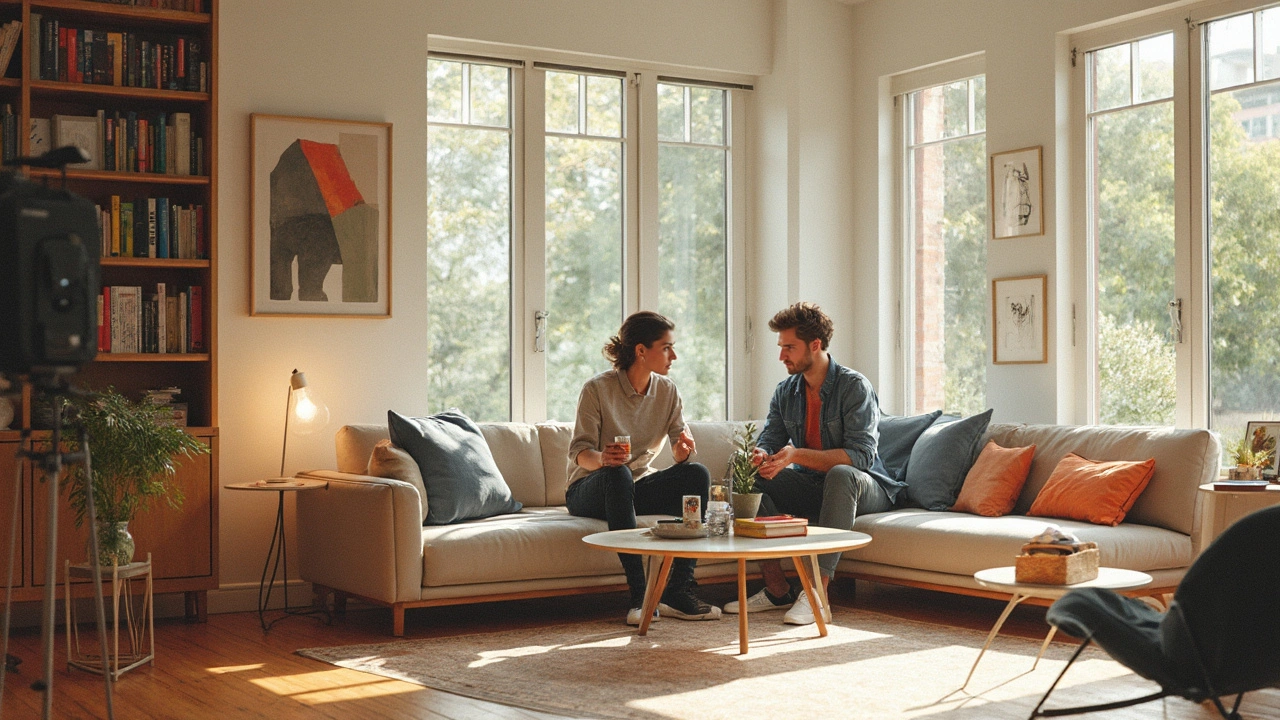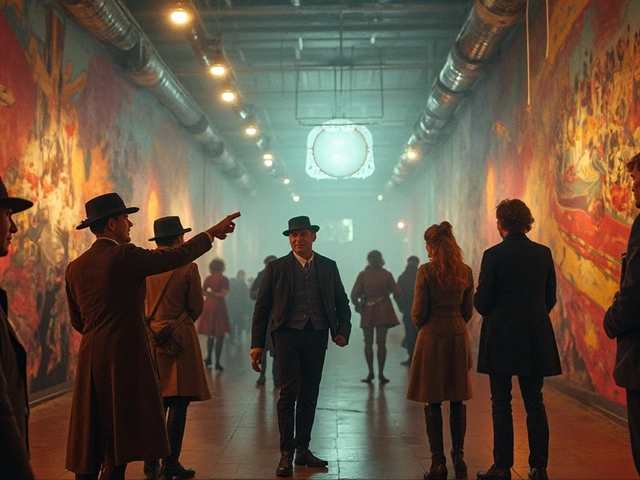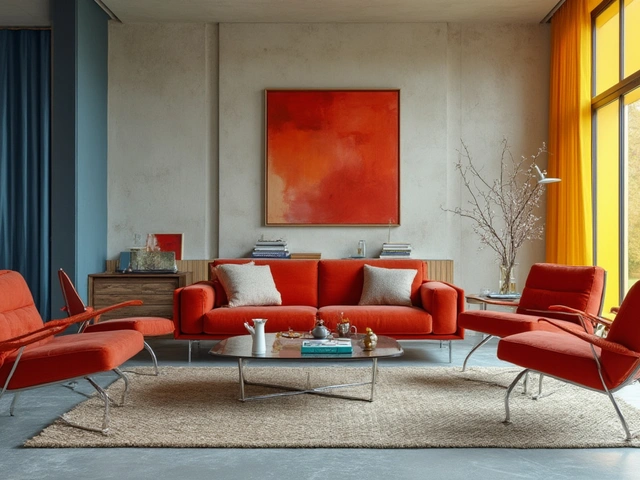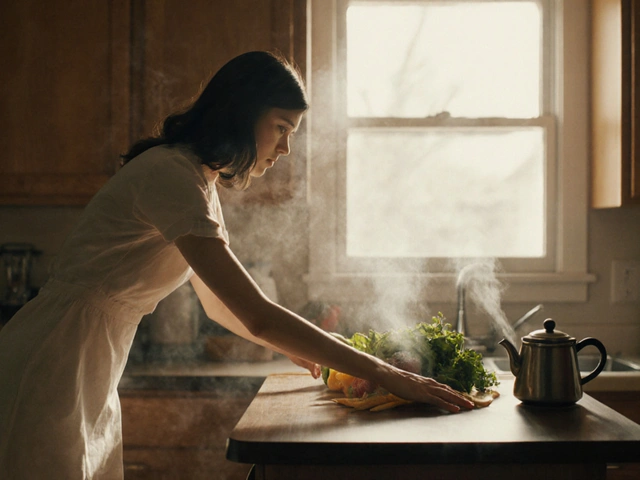The weirdest thing about Bauhaus? You’ve probably sat on one of its chairs, spotted its vibe in tech logos, or admired a building shaped by its rules—even if you never knew the name. Born out of the chaos after World War I, Bauhaus flipped the script on art and design. No more stuffy ornaments just for show; it was all about forms that actually worked for real people.
If you’ve ever wondered, “Why do my office chairs look so simple and cool?”—that’s Bauhaus thinking in action. They believed everything, from a teapot to an apartment block, could be beautiful and useful at the same time. And they took that idea really seriously: professors and students worked side by side, creating and testing new designs in their actual school workshops instead of just on paper. Want your home to feel less cluttered? You can swipe a page from their playbook today, no design degree needed.
- What Sparked the Bauhaus Movement?
- Key People and Their Bold Designs
- How Bauhaus Changed Everyday Life
- Bringing Bauhaus Ideas into Your Space
What Sparked the Bauhaus Movement?
The Bauhaus movement didn’t just pop up out of nowhere. In 1919, after World War I left Germany in shambles, people wanted a fresh start—especially with art, design, and the way cities looked. Architect Walter Gropius thought the art world needed a major reset. He opened a school in Weimar, calling it “Staatliches Bauhaus,” and had one big idea: no more snooty split between artists and craftspeople. Instead, everyone should team up to make life better with good design.
Back then, most schools still taught art as something “pure,” while crafts were totally separate—like, painting was worshipped while making a chair was just trade work. Gropius flipped this upside down. He brought painters, sculptors, metal workers, and carpenters under one roof. They learned by doing, not just sitting around with textbooks. The goal? To create stuff that looked nice but also worked for normal people, not just the super rich.
Even the timing mattered. Machines and factories were changing everything—suddenly, you could make things faster and cheaper. But Gropius worried this would fill homes up with ugly, soulless junk. Bauhaus wanted to prove you could use machines to build furniture or buildings that actually look awesome and stand the test of time.
| Year | Event | Location |
|---|---|---|
| 1919 | Founding of Bauhaus School | Weimar, Germany |
| 1923 | Bauhaus Exhibition (first big showcase) | Weimar, Germany |
| 1925 | Bauhaus moves to Dessau | Dessau, Germany |
One surprising fact: the first Bauhaus students included war veterans, workers, and women—pretty rebellious at the time. Bauhaus became a magnet for creative rebels hungry for change. It turned into a launchpad for everything we now think of as Bauhaus style—simple, bold, and totally focused on what people really need day to day.
Key People and Their Bold Designs
No big idea takes off without strong-willed, creative people tossing out old rules. The Bauhaus was stacked with this kind of energy. These were not just dreamers; they were doers, and you can see their mark even in today's everyday objects.
Let’s start with Walter Gropius, the founder. He saw the mess after World War I and said, “There’s got to be a better way.” His thing? Combining art, craft, and technology to push out stuff ordinary people could actually use. He designed the Bauhaus school building itself — glass, steel, open space. It looked shockingly modern in 1919 and still feels fresh now.
Then there’s Marcel Breuer, who took metal pipes from bikes and made them into chairs (like the iconic Wassily Chair in 1925). Instead of heavy wooden thrones, here was furniture you could move around and actually afford. Apartment-dwellers everywhere can thank Breuer for that.
Paul Klee and Wassily Kandinsky, the school’s resident art rebels, brought a playful mess of color and geometry to the classroom, showing students that abstract forms could find practical uses in design—from textiles to lamps. Their paintings still show up in posters and T-shirts today.
We’ve also got Gunta Stölzl—the only female master at the school—who shook up textiles completely. She pushed weaving from old-school patterns into bold blocks and stripes, basically inventing the modern rug, throw blanket, and pillow you see in stores now.
- Walter Gropius focused on clean, open spaces with smart use of glass and steel.
- Marcel Breuer’s bent tubular steel chairs are still found in offices, schools, and restaurants worldwide.
- Paul Klee and Wassily Kandinsky inspired new ways to mix art and function.
- Gunta Stölzl made ‘minimal’ and ‘bold’ cool in weaving and fabrics.
Just how deep has their influence gone? Check out this quick table:
| Bauhaus Designer | Signature Design | Common Modern Use |
|---|---|---|
| Walter Gropius | Bauhaus School Building | Open-plan offices, minimalist homes |
| Marcel Breuer | Wassily Chair (1925) | Cafés, living rooms |
| Paul Klee | Color Theory in Education | Textbooks, art classes |
| Gunta Stölzl | Modernist Rugs and Upholstery | Home goods, decor stores |
If you spot something minimal, geometric, or practical in your surroundings, odds are these Bauhaus legends had a hand in shaping it—sometimes without even trying to be trendy. Their mix of creative guts and down-to-earth problem solving is why Bauhaus is still so present in our lives nearly a century later.
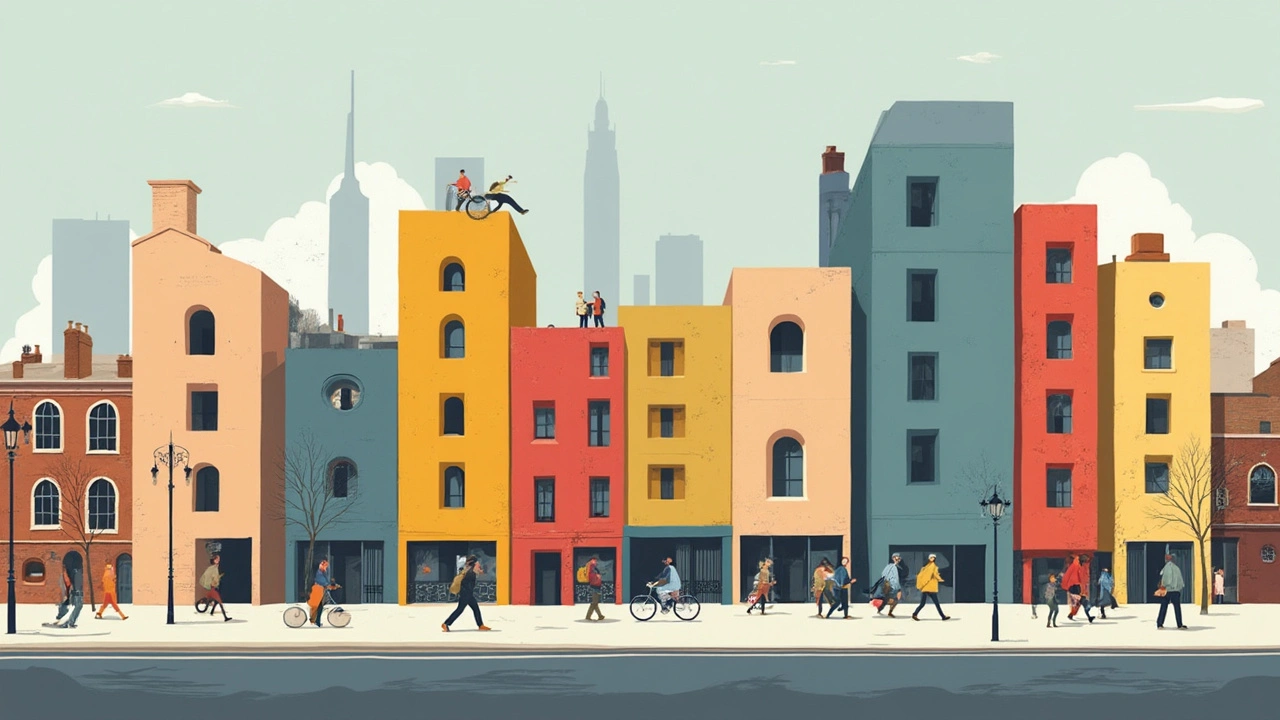
How Bauhaus Changed Everyday Life
If you’ve ever used a chair that just makes sense—solid, simple, and comfy—there’s a good chance you’re sitting in the shadow of Bauhaus. This movement didn’t just stay locked in fancy art schools; it got into homes, schools, offices, and even gadgets.
Bauhaus designers thought homes should be easy to live in and quick to clean. Before Bauhaus, furniture was heavy, carved, and stuffed with frills nobody needed. Designers like Marcel Breuer came up with the famous Wassily chair, using tubular steel instead of wood. Suddenly, chairs could be mass-produced, lighter, and way cheaper. It made good design available to nearly everyone, not just rich folks with a mansion.
- Walter Gropius, the first Bauhaus director, pushed for buildings that used lots of glass, steel, and concrete. Think wide windows and flat roofs—that’s Bauhaus architecture.
- Kitchens turned practical. Margarete Schütte-Lihotzky designed the Frankfurt Kitchen, which was basically the model for every small, smart kitchen you see in apartments today.
- Typography got a facelift. Artists like Herbert Bayer made crisp, easy-to-read typefaces. Next time you’re reading a sleek website or street sign, that clean look started with Bauhaus.
Bauhaus also changed the way people shopped. Their designs could be mass-produced, which meant stores filled up with simple, useful stuff that worked for families like mine. Fast forward, and you’ll spot Bauhaus roots all over IKEA—modular furniture, flat packs, and those little storage hacks for small spaces.
Let’s check out some numbers that show just how big the Bauhaus impact really was:
| Item/Area | Bauhaus Influence | Modern-Day Example |
|---|---|---|
| Office Furniture | First to use bent steel tubing | Everyday office and home chairs |
| Urban Housing | Uniform, affordable layouts for all | City apartment blocks, tiny homes |
| Kitchen Design | Efficiency, built-in cabinets, workflow focus | Standard modular kitchen setups |
| Typography | Sans-serif, functional fonts | Modern UX design, street signage |
What really sets Bauhaus apart? Its "less is more" attitude didn’t just survive—it spread. Even my kid Maeve spotted it in her classroom chairs and the logo on her sneakers. Once you know what to look for, Bauhaus pops up everywhere. That’s real-life impact, every day.
Bringing Bauhaus Ideas into Your Space
Here’s the fun part—the Bauhaus look isn’t just history, it’s super practical at home right now. People pay top dollar today for original Bauhaus pieces, but you don’t need a museum budget. The trick is to focus on what matters: clean lines, real function, and a limited color palette. When you hear "Bauhaus," think less about vintage gallery pieces and more about furniture and décor you don’t have to baby.
Start with furniture—think tubular steel chairs, simple lamp shapes, or handy shelves that actually organize your mess. The Wassily Chair by Marcel Breuer pretty much set the standard for the modern chair as we know it: light, easy to clean, and sturdy enough for daily use. For colors, stick to primary shades—red, blue, yellow—mixed in with lots of black, white, and gray. You see this pattern everywhere, from IKEA catalogs to budget storage cubes at your local store.
- Pick furniture with clean, 90-degree angles and no fussy extras.
- Use open shelves instead of bulky cabinets. It keeps things visual and simple.
- Add a splash of primary color, but don’t go wild—one red vase or yellow pillow gives the vibe without feeling like a preschool.
- Go for metal, glass, and plain wood textures—they last, and they fit the Bauhaus habit of choosing easy materials.
Bauhaus was nuts about function. If it doesn’t serve a real purpose, skip it. Hide clutter in stackable boxes or baskets, and keep countertops clear. Even art should be straightforward: a geometric print or a bold typography poster brings the look together way better than complicated paintings.
| Item | Classic Bauhaus Trait | Why It Works Today |
|---|---|---|
| Wassily Chair | Exposed steel frame | Lightweight, durable, always looks modern |
| Open Shelving Unit | No doors, straight lines | Makes a small space feel bigger and uncluttered |
| Laccio Table | Simple top, tubular legs | Blends with any décor, super practical |
It’s all about balance—don’t get sucked into trends or overdo it. Ask yourself: is this useful? Is it modern design without extra fuss? If yes, you’re nailing Bauhaus style. And if you want to give the kids some design freedom, get them simple geometric blocks or posters. Even Maeve approved when I turned our old living room into a bright, clutter-free space that finally felt open and easy.

